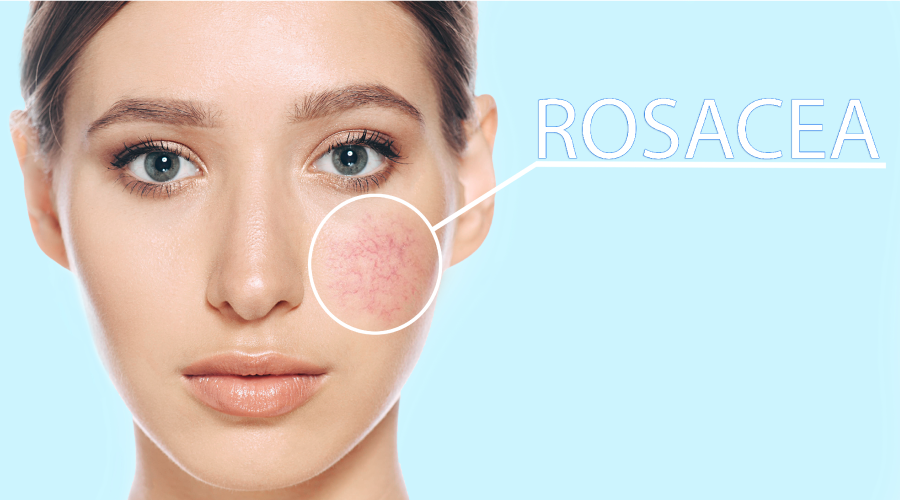Rosacea is a common skin condition that affects millions of people worldwide. Characterized by redness, flushing, visible blood vessels, and often accompanied by pimple-like bumps, it can cause physical discomfort and have a significant impact on self-esteem. While there is no known cure for rosacea, various treatments can help manage its symptoms effectively. In this article, we’ll explore some of the widely recognized rosacea treatments, with a special focus on Sylfirm X, a promising option for those seeking relief from this skin condition.
Understanding Rosacea: Causes and Triggers
Before delving into treatments, it’s essential to understand what causes rosacea. Although the precise cause remains elusive, several factors are believed to contribute to its development. These factors include genetics, environmental influences, and an overactive immune system. Moreover, certain triggers can exacerbate rosacea symptoms. These triggers vary from person to person but often include exposure to sunlight, spicy foods, alcohol, hot beverages, and stress.
Conventional Rosacea Treatments
Over the years, medical science has made significant strides in developing treatments for rosacea. While there is no one-size-fits-all approach, several proven methods can help manage the condition.
Topical Creams and Gels: Dermatologists often prescribe topical treatments containing ingredients like azelaic acid, metronidazole, or brimonidine to reduce redness and inflammation associated with rosacea. These medications can be applied directly to the affected areas of the skin.
Oral Medications: In some cases, oral antibiotics may be recommended to control rosacea symptoms. Tetracycline, doxycycline, and minocycline are commonly prescribed antibiotics that can help reduce inflammation and redness.
Laser Therapy: Laser and light-based therapies are increasingly popular for treating rosacea, especially in cases where visible blood vessels are a prominent concern. These treatments can target and minimize the appearance of blood vessels, improving the overall appearance of the skin.
Skincare Regimen: Adopting a gentle skincare routine is crucial for managing rosacea. Using mild, non-irritating products and avoiding harsh exfoliants or alcohol-based toners can help minimize flare-ups.
Sylfirm X: A Breakthrough Rosacea Treatment
While traditional rosacea treatments have proven effective for many, there’s a growing interest in innovative approaches. One such breakthrough is Sylfirm X, a cutting-edge solution that shows remarkable promise in managing rosacea.
Sylfirm X is a non-invasive and advanced aesthetic technology that combines microneedling with radiofrequency (RF) energy. This unique combination addresses multiple aspects of rosacea, making it a versatile and effective treatment option. Here are some key benefits of Sylfirm X for rosacea sufferers:
Targeted Redness Reduction: Sylfirm X utilizes RF energy to target the small blood vessels that cause redness in rosacea-prone skin. By precisely targeting these vessels, it can significantly reduce redness and flushing, leaving the skin looking more even-toned.
Improved Skin Texture: The microneedling component of Sylfirm X stimulates collagen production, helping to improve skin texture and reduce the appearance of acne-like bumps often associated with rosacea. This can result in smoother and healthier-looking skin.
Minimal Downtime: Unlike some other rosacea treatments that may require extended downtime, Sylfirm X boasts minimal downtime. Patients can typically return to their daily activities shortly after the procedure, making it a convenient option for those with busy lives.
Long-Lasting Results: Many patients report long-lasting results with Sylfirm X, meaning fewer maintenance sessions are required compared to some other treatments. This can save both time and money in the long run.
Safe for All Skin Types: Sylfirm X is suitable for individuals with various skin types and tones, making it an inclusive choice for rosacea treatment.
The Sylfirm X Experience
Undergoing Sylfirm X treatment is a straightforward process. Typically performed by a trained dermatologist or aesthetic specialist, the procedure begins with the application of a topical numbing cream to ensure comfort during the session. The Sylfirm X device is then used to deliver RF energy through tiny microneedles, precisely targeting problem areas. Patients may experience mild redness and swelling immediately following the procedure, but these side effects typically subside within a few hours to a day.
The number of Sylfirm X sessions needed can vary depending on the severity of rosacea and individual skin responses. However, many patients notice improvements after just one treatment, with optimal results achieved after a series of sessions.
Combining Sylfirm X with Other Treatments
In some cases, dermatologists may recommend combining Sylfirm X with other rosacea treatments to maximize results. For example, combining Sylfirm X with a tailored skincare regimen or topical medications can address both the underlying causes and visible symptoms of rosacea. This personalized approach allows for comprehensive and effective management of the condition.
Conclusion
Rosacea is a challenging skin condition, but with the right treatments, its symptoms can be effectively managed. Traditional options like topical creams, oral medications, and laser therapy have proven their worth in the fight against rosacea. However, the emergence of innovative technologies like Sylfirm X offers new hope to those seeking improved results with minimal downtime and long-lasting benefits. Sylfirm X’s unique combination of microneedling and RF energy makes it a promising choice for individuals looking to reduce redness, improve skin texture, and regain confidence in their skin. To explore whether Sylfirm X is the right solution for your rosacea, consult with a qualified dermatologist who can provide personalized guidance and treatment plans. Remember, while there may be no cure for rosacea, there are certainly effective ways to manage its impact and embrace healthy, beautiful skin.


